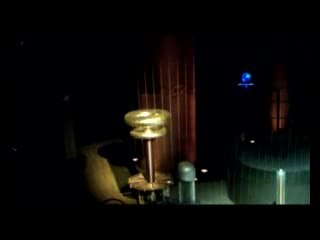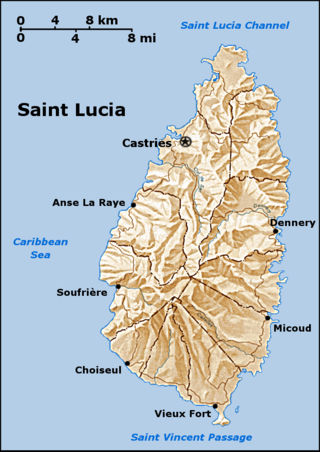Related Research Articles

Differential geometry is a mathematical discipline that studies the geometry of smooth shapes and smooth spaces, otherwise known as smooth manifolds. It uses the techniques of differential calculus, integral calculus, linear algebra and multilinear algebra. The field has its origins in the study of spherical geometry as far back as antiquity. It also relates to astronomy, the geodesy of the Earth, and later the study of hyperbolic geometry by Lobachevsky. The simplest examples of smooth spaces are the plane and space curves and surfaces in the three-dimensional Euclidean space, and the study of these shapes formed the basis for development of modern differential geometry during the 18th and 19th centuries.

In celestial mechanics, the Lagrange points are points of equilibrium for small-mass objects under the gravitational influence of two massive orbiting bodies. Mathematically, this involves the solution of the restricted three-body problem.

The Jupiter trojans, commonly called trojan asteroids or simply trojans, are a large group of asteroids that share the planet Jupiter's orbit around the Sun. Relative to Jupiter, each trojan librates around one of Jupiter's stable Lagrange points: either L4, existing 60° ahead of the planet in its orbit, or L5, 60° behind. Jupiter trojans are distributed in two elongated, curved regions around these Lagrangian points with an average semi-major axis of about 5.2 AU.

A space settlement is a settlement in outer space, sustaining more extensively habitation facilities in space than a general space station or spacecraft. Possibly including closed ecological systems, its particular purpose is permanent habitation.

The Interplanetary Transport Network (ITN) is a collection of gravitationally determined pathways through the Solar System that require very little energy for an object to follow. The ITN makes particular use of Lagrange points as locations where trajectories through space can be redirected using little or no energy. These points have the peculiar property of allowing objects to orbit around them, despite lacking an object to orbit. While it would use little energy, transport along the network would take a long time.
L5 or L-5 may refer to:

Sir Francis Bernard, 1st Baronet was a British colonial administrator who served as governor of the provinces of New Jersey and Massachusetts Bay. His uncompromising policies and harsh tactics in Massachusetts angered the colonists and were instrumental in the building of broad-based opposition within the province to the rule of Parliament in the events leading to the American Revolution.
Gerard Kitchen O'Neill was an American physicist and space activist. As a faculty member of Princeton University, he invented a device called the particle storage ring for high-energy physics experiments. Later, he invented a magnetic launcher called the mass driver. In the 1970s, he developed a plan to build human settlements in outer space, including a space habitat design known as the O'Neill cylinder. He founded the Space Studies Institute, an organization devoted to funding research into space manufacturing and colonization.

Polydeuces, also designated Saturn XXXIV, is a small trojan moon of Saturn occupying the trailing L5 Lagrange point of Dione. It was discovered by the Cassini Imaging Science Team in images taken by the Cassini space probe on 21 October 2004. With a mean diameter of about 3 km (1.9 mi), Polydeuces is thought to have a smooth surface coated with fine, icy particles accumulated from the cryovolcanic plumes of Enceladus. In its orbit around Saturn, Polydeuces periodically drifts away from Dione's Lagrange point due to gravitational perturbations by other nearby moons of Saturn. Of the four known trojan moons of Saturn, Polydeuces exhibits the largest displacement from its Lagrange point.
The L5 Society was founded in 1975 by Carolyn Meinel and Keith Henson to promote the space colony ideas of Gerard K. O'Neill.

Neptune trojans are bodies that orbit the Sun near one of the stable Lagrangian points of Neptune, similar to the trojans of other planets. They therefore have approximately the same orbital period as Neptune and follow roughly the same orbital path. Thirty-one Neptune trojans are currently known, of which 27 orbit near the Sun–Neptune L4 Lagrangian point 60° ahead of Neptune and four orbit near Neptune's L5 region 60° behind Neptune. The Neptune trojans are termed 'trojans' by analogy with the Jupiter trojans.
W. Patrick McCray is a historian at the University of California, Santa Barbara. He researches, writes about, and teaches the history of science and the history of technology.

The concepts of space stations and space habitats feature in science fiction. The difference between the two is that habitats are larger and more complex structures intended as permanent homes for substantial populations, but the line between the two is fuzzy with significant overlap and the term space station is sometimes used for both concepts. The first such artificial satellite in fiction was Edward Everett Hale's "The Brick Moon" in 1869, a sphere of bricks 61 meters across accidentally launched into orbit around the Earth with people still onboard.

In mathematics, especially the areas of numerical analysis concentrating on the numerical solution of partial differential equations, a stencil is a geometric arrangement of a nodal group that relate to the point of interest by using a numerical approximation routine. Stencils are the basis for many algorithms to numerically solve partial differential equations (PDE). Two examples of stencils are the five-point stencil and the Crank–Nicolson method stencil.

Howard Keith Henson is an American electrical engineer and writer. Henson writes on subjects including space engineering, space law, memetics, cryonics, evolutionary psychology, and the physical limitations of Transhumanism. In 1975, Henson founded the L5 Society with his then-wife Carolyn Meinel to promote space colonization. In 1987 the L5 Society merged with the National Space Institute to form the National Space Society.

The singing Tesla coil, sometimes called a zeusaphone, thoramin or musical lightning, is a form of plasma speaker. It is a variety of a solid state Tesla coil that has been modified to produce musical tones by modulating its spark output. The resulting pitch is a low fidelity square wave like sound reminiscent of an analog synthesizer. The high-frequency signal acts in effect as a carrier wave; its frequency is significantly above human-audible sound frequencies, so that digital modulation can reproduce a recognizable pitch. The musical tone results directly from the passage of the spark through the air. Because solid-state coil drivers are limited to "on-off" modulation, the sound produced consists of square-like waveforms rather than sinusoidal.

Patrick Michel is a French planetary scientist, Senior Researcher at CNRS, leader of the team TOP of the CNRS and Université Côte d'Azur Lagrange Laboratory at the Côte d'Azur Observatory in Nice (France), and also a Global Fellow of the University of Tokyo.
William Weldon Higgins was an American vaudeville entertainer, comedian, singer and songwriter — critically acclaimed, and is historically chronicled, as one of the most popular stage comedians of the 1920s. Langston Hughes named him as one of the "Golden Dozen" black comedians. On various recordings of the 1920s, Higgins used the pseudonym Jazz Caspar(akaCasper).

This bibliography of Saint Lucia is a list of English-language nonfiction books which have been described by reliable sources as in some way directly relating to the subject of Saint Lucia, its history, geography, people, culture, etc.
References
- ↑ .McCray, W. Patrick (2012). The Visioneers: How a Group of Elite Scientists Pursued Space Colonies, Nanotechnologies, and a Limitless Future. Princeton University Press. p. 94. ISBN 978-0691139838. OCLC 788266380 . Retrieved 2016-11-15.
- ↑ Copyright 1978 by William S. Higgins and Barry D. Gehm
- ↑ Higgins, William S.; Gehm, Barry D. "Home on Lagrange (The L5 Song)". CoEvolution Quarterly (Summer 1978): 30. Retrieved 2014-10-31.
- ↑ Higgins, William S.; Gehm, Barry D. (July 1979). "Home on Lagrange (The L5 Song)" (PDF). L5 News. 4 (5): 3. Archived from the original (PDF) on 2006-09-27. Retrieved 2014-10-31.
- ↑ Pournelle, Jerry; Carr, John F., eds. (1979). The Endless Frontier, Volume 1. Ace Books. OCLC 6500329.